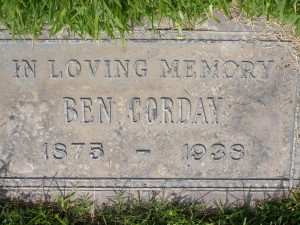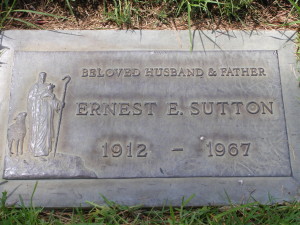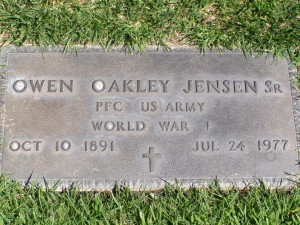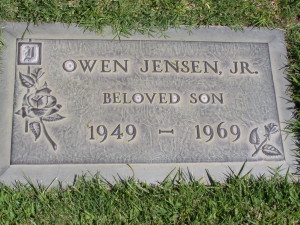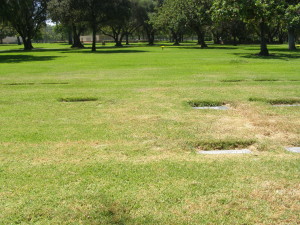Milton Zeis was born in Rock Island, Illinois on December 10, 1901. Starting at a very young age he wanted to live life to the fullest. At 9 years old he set off to see the world and hopped a train West to Calfornia. As a little boy, Milton was fascinated by the circus and it was there he learned of tattooing and magic. It would later prove to be very influential even through the latter parts of his life.
Milton was a jack of many trades and he did quite well with each of them. He was and still continues to be influential to the tattoo community. Milton was very open with his knowledge of tattooing by sharing tips and training others how to tattoo. “The Zeis School of Tattooing” included course work that was sent to students and then sent back to Milton for review. He was also known for his book,”Tattooing the World Over” and tattooing serial numbers on animals.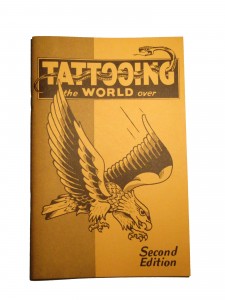
Before Milton was a full-time tattooer he was a commercial artist. He went to school at the Chicago Art Institute. The Zeis Studio first began as a commercial art studio. He also worked for two publishing companies, Microswitch in Freeport,IL and Rockford Illustrating.
Milton was a great business man and moved to Rockford, IL for a better opportunity. The Zeis studio was a tattoo supply shop that did extremely well. He sold merchandise all over the world through word of mouth and his customer service was great. Milton was very down to earth and treated all men equal.
It wasn’t until the early 60’s on a hot Fourth of July day where he performed at a picnic in his clown outfit. He was the head clown for the Shriners and he went by the name “Uncle Milty”. He enjoyed performing for children and traveled across the country.
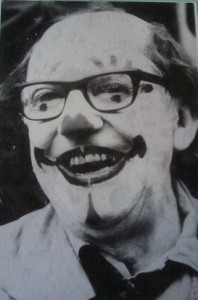
Last but certainly not least, Milton was a family man. In 1924, he married Eleanor Gartman and later in 1932, they gave birth to their only child, Joanne. Unfortunately, Eleanor was diagnosed with cancer and passed away on November 19, 1945. Milton always helped out where he could and stayed by her side. Later he married Lorna on July 16,1949. Lorna had one daughter, Mary.
Milton had a very full life. He died at the age of 71, while getting ready to perform magic tricks in Lanark, IL in 1972.
-ZEIS STUDIO.
History of Tattooing: Tattoo Artist Grave Sites
By Carmen Forquer Nyssen
While browsing the Buzzworthy Tattoo History site, some of you might have noticed that visiting and/or documenting tattoo artist grave sites has been one of the focal points of my tattoo history research (See Tattoo Artist Grave Site Trip 2010 and Find A Grave). There’s good reason. It’s a grand salute to ‘those who paved the way’ and the creation of an accessible tattoo artist grave index enables others to pay their respects.
Most would agree that grave markers carry special historical significance. They stand as enduring physical remembrances of those who came before us. They have a way of invoking the person and their deeds, ever more solidifying their place in history. For this reason, it’s always a little deflating when you encounter an empty space where you expect to see a nicely carved plaque or commemorating tombstone. Sadly, a good number of revered tattoo artists died without the means for a proper burial —William Grimshaw, Harry Lawson, Charlie Barrs, and Walter Torun are a few that come to mind.
While researching Ralph Johnstone’s history for Chuck Eldridge’s Tattoo Archive Life & Times series, I learned he also fell into this category. Johnstone died November 14, 1960 and was buried in Oakridge-Glen Oak Cemetery just outside of Chicago proper. For nearly 55 years, his grave sat bare, probably without a single visitor for the greater extent. What a tragedy for such an enormously talented tattoo artist!
Fortunately, this all changed with the release of the Tattoo Archive’s recent Ralph Johnstone Life & Times booklet. When Chicago tattoo artist Nick Collela of Great Lakes Tattoo read about Johnstone’s lack of a grave marker, he promptly set about making things right. On his own dime and sole efforts, Nick arranged for a beautiful memorial to be placed on Johnstone’s grave site —complete with an engraving memorializing one of Johnstone’s iconic tattoo designs.
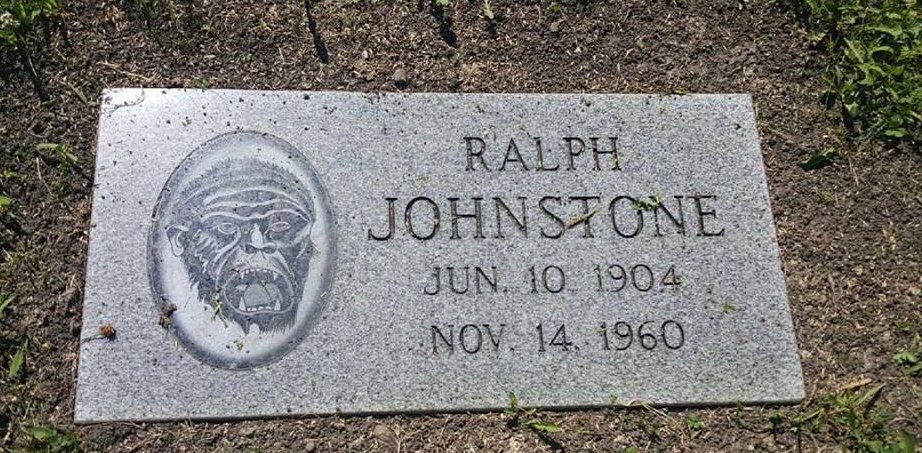
Photo Courtesy of Nick Collela. Click for link to grave. Oak Ridge-Glen Oak Cemetery, North Lawn, Lot 576, Grave 1. Hillside, IL
In my book, Nick’s thoughtful gift to Johnstone and the tattoo community is a testament to the importance of grave markers in honoring those who came before us and in keeping their memory alive.
In Nick’s candid words:
“Honestly I guess I just thought it was the right thing to do. I never questioned it. Once I saw he had no marker I thought well he needs one. Everyone always talks about giving back to tattooing and whatever else. Instead of trying to get something of Ralph’s I wanted to give him something. That’s how I gave back to him. He deserves it.”
 It’s
a beautiful thing when history comes together. Previously, not much of
Johnstone’s career had been documented. Thanks to investigation/research
on my part, Chuck Eldridge’s compilation and preservation of his career
in the Life & Times series, and Nick’s heartfelt
generosity, tattoo artists and tattoo enthusiasts can now visit
Johnstone’s grave and reflect on his contributions to tattooing in a
more meaningful way.
It’s
a beautiful thing when history comes together. Previously, not much of
Johnstone’s career had been documented. Thanks to investigation/research
on my part, Chuck Eldridge’s compilation and preservation of his career
in the Life & Times series, and Nick’s heartfelt
generosity, tattoo artists and tattoo enthusiasts can now visit
Johnstone’s grave and reflect on his contributions to tattooing in a
more meaningful way.
If you’re interested in learning more about Ralph Johnstone, you can purchase a copy of the Tattoo Archive’s Life & Times booklet here at the Book Mistress website. Also, if you find yourself in Chicago, make sure to stop by Great Lakes Tattoo and check out some of Johnstone’s living tattoo history as well as that of many other Chicago tattoo characters. Nick has done an amazing job of preserving Chicago’s tattooing traditions through the history he presents in his shop, and the whole crew at Great Lakes keeps with this vibe in how they ply their craft.
Tattoo Artists Find A Grave
For information on historical tattoo artist burials, and related burials, visit Buzzworthy Tattoo History’s Find A Grave account . The documenting of tattoo artist graves is an ongoing project that has helped in identifying and paying homage to many of tattooing’s forgotten historical characters.
Link: Tattoo Artist Grave Locations
Link: Tattooed People Grave Locations
Link: Show People Grave Locations
Tattoo Grave Site Trip 2010
In 2010, my husband and I embarked on a labor of love road trip from Washington State to Southern California to document the resting places of historical tattoo artists. At the time, when this information wasn’t available on the internet or otherwise documented for posterity, locating these burial locations took quite a bit of research. The journey of visiting one cemetery to the next also required much patience and planning.
- 1st Stop of the Day. Behold Big Ben Corday! Valhalla Cemetery.
- 2nd Stop. Ernie Sutton, one of Bert Grimm’s partners. Forest Lawn Cemetery, Hollywood Hills.
- 3rd Stop. Red Gibbons. Forest Lawn Cemetery, Glendale.
- 4th Stop. Otto Mason. Forest Lawn Cemetery, Glendale. Boston Tattoo artist originally
- 5th Stop. Aka Jack Julian. Los Angeles National Cemetery
- 6th Stop. L.L. McKeever. Los Angeles National Cemetery
- 7th Stop. Forest Lawn Cemetery, Cypress
- 8th Stop. Forest Lawn Cemetery, Cypress. Right next to Owen Sr.
- Harry V. Lawson’s resting place. No grave marker. Westminster Memorial Park, Los Angeles. Photo by Carmen Nyssen c. 2010
